Hey all! Real Farmer Jeff here.
Mulching your raised beds is one of the simplest, highest-impact things you can do for your garden. While it certainly enhances the garden’s appearance, the real benefits go far beyond aesthetics. For me, mulching is essential to maintaining a healthy, thriving garden.

In this guide, I will share some of the best garden mulches with pros and cons, as well as some of the top benefits of mulching your garden.
Let’s get started!
Benefits of Mulching
- Moisture Retention: Reduces evaporation, keeping soil moist longer.
- Temperature Regulation: Keeps soil cooler in summer and warmer in early spring/fall.
- Weed Suppression: Blocks sunlight to prevent weed germination.
- Soil Health: Organic mulches break down and enrich the soil.
- Erosion Control: Protects soil from wind and water erosion.
- Pest Management: Some mulches deter pests or invite beneficial insects.
- Disease Control: Prevents soil from splashing onto leaves, reducing disease risk (especially important for tomatoes).
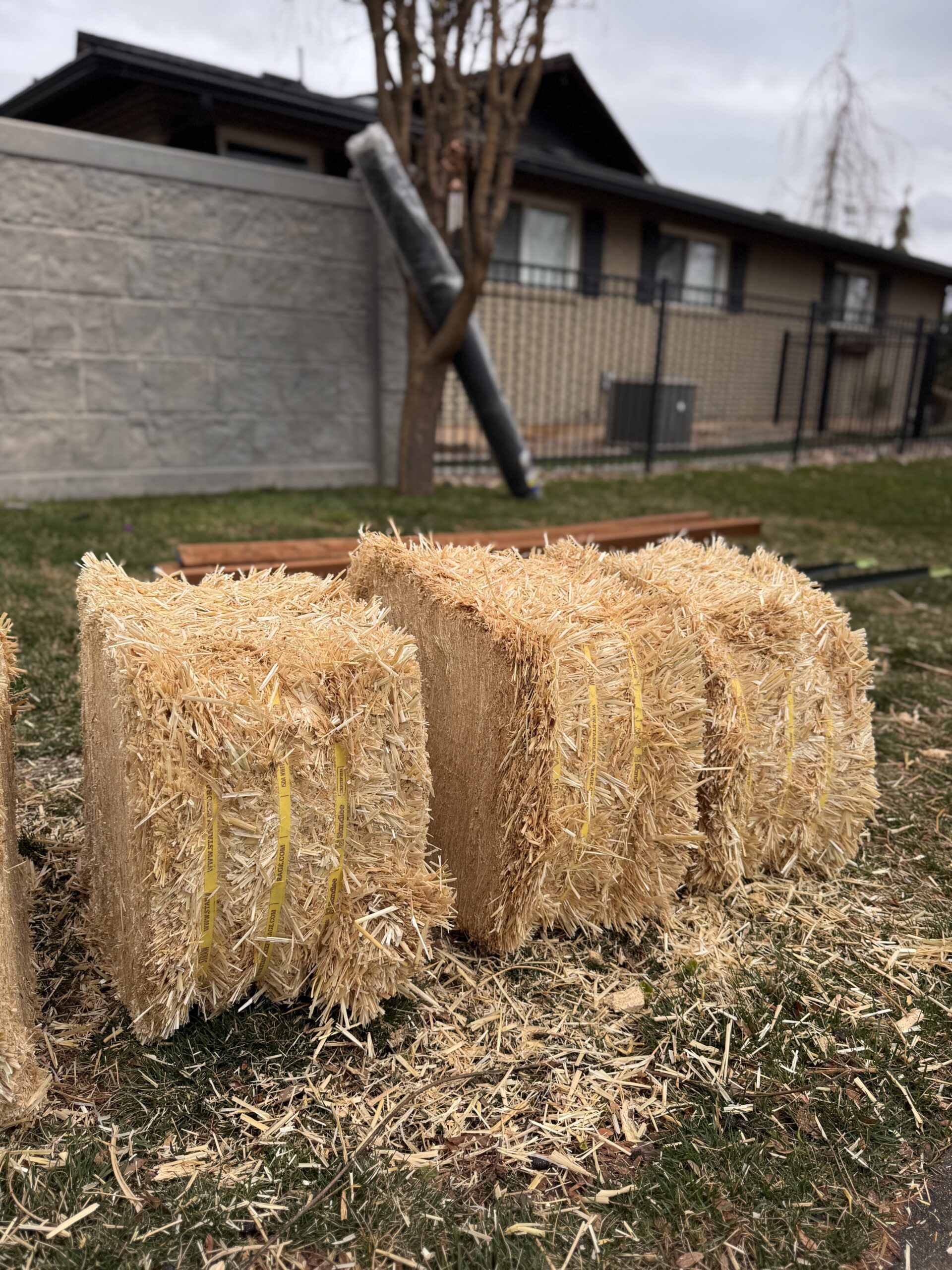
Types of Mulch for Raised Beds: Pros and Cons
1. Straw (Not Hay):
Dried stalks left over after grain crops like wheat or oats are harvested. Often sold in bales. Best for vegetable gardens and annual beds.
| Pros | Cons |
|---|---|
| Excellent weed suppressant | Can blow away in windy areas |
| Lightweight and easy to apply | May harbor weed seeds if it’s hay or not seed-free straw |
| Breaks down and enriches soil | Needs regular replacement (every season or so) |
2. Shredded Leaves / Leaf Mold:
Fallen leaves shredded into small pieces. Leaf mold is partially decomposed leaf matter. Best for all garden beds, especially when aged.
| Pros | Cons |
|---|---|
| Free and abundant in fall | Fresh leaves can mat and block water if not shredded |
| Rich in organic matter | High carbon content may temporarily tie up nitrogen if incorporated into soil too early |
| Improves soil texture as it decomposes |
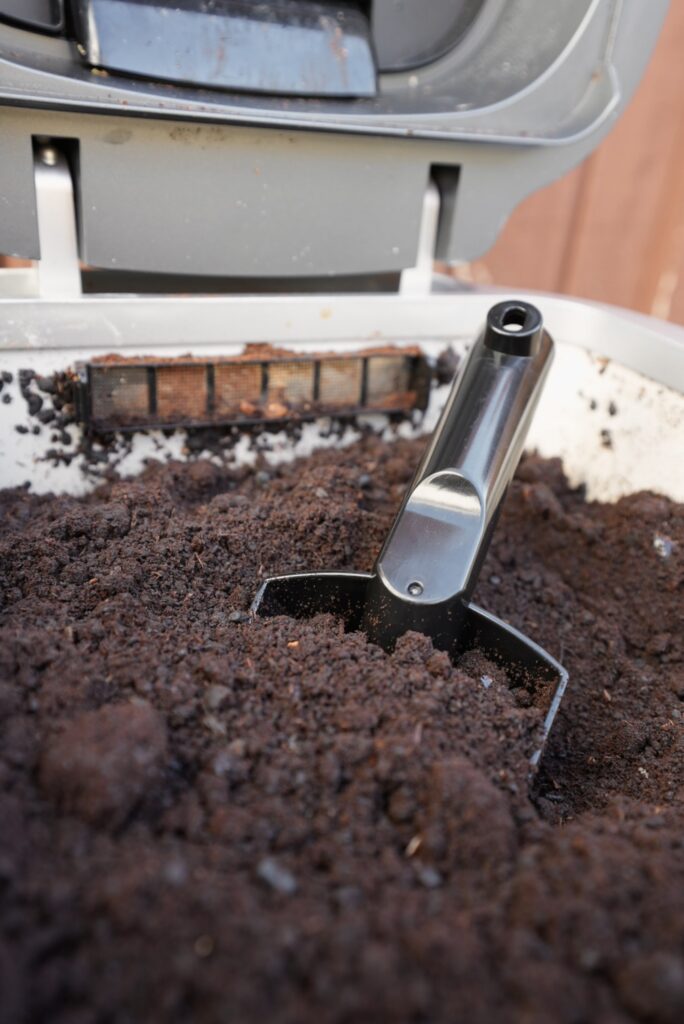
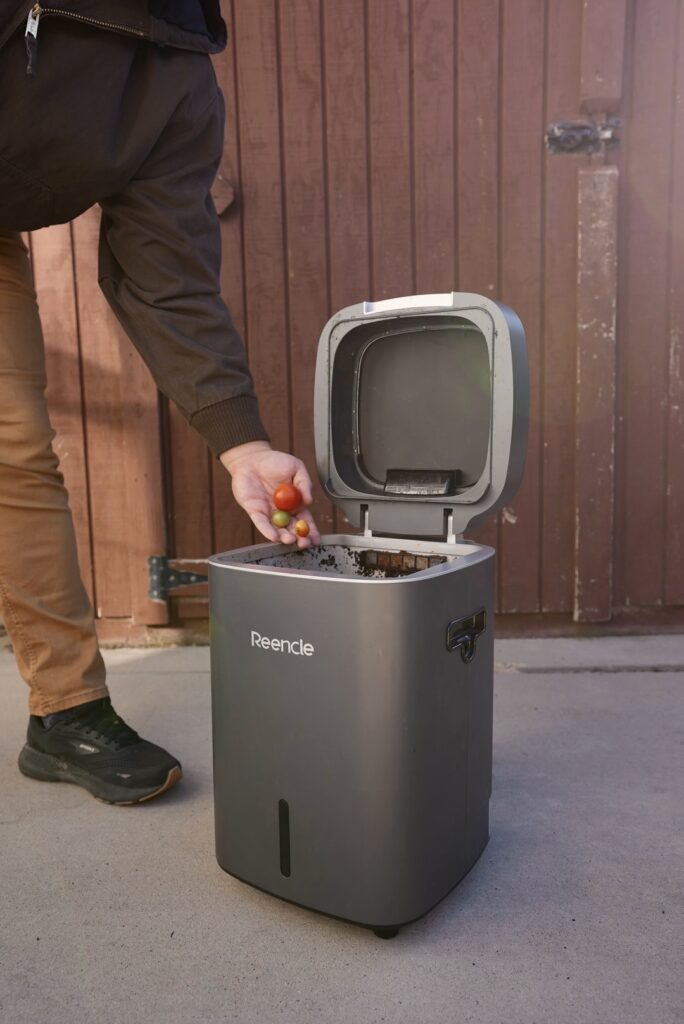
3. Compost:
Decomposed organic matter made from kitchen scraps, plant material, or manure. Rich and crumbly. Best for vegetable beds and areas needing nutrient boosts.
| Pros | Cons |
|---|---|
| Nutrient-rich—feeds plants directly | May not suppress weeds as well as bulkier mulches |
| Improves soil structure | Needs replenishing more frequently |
| Great for seedlings and top dressing | Can crust over if exposed directly to sun |
If you live in a small space like me, it can be difficult to find the space in your backyard dedicated to composting. I have a kitchen composter that is quite small, odorless, and can turn food scraps into compost within a matter of 24 hours. I’ve linked it here.
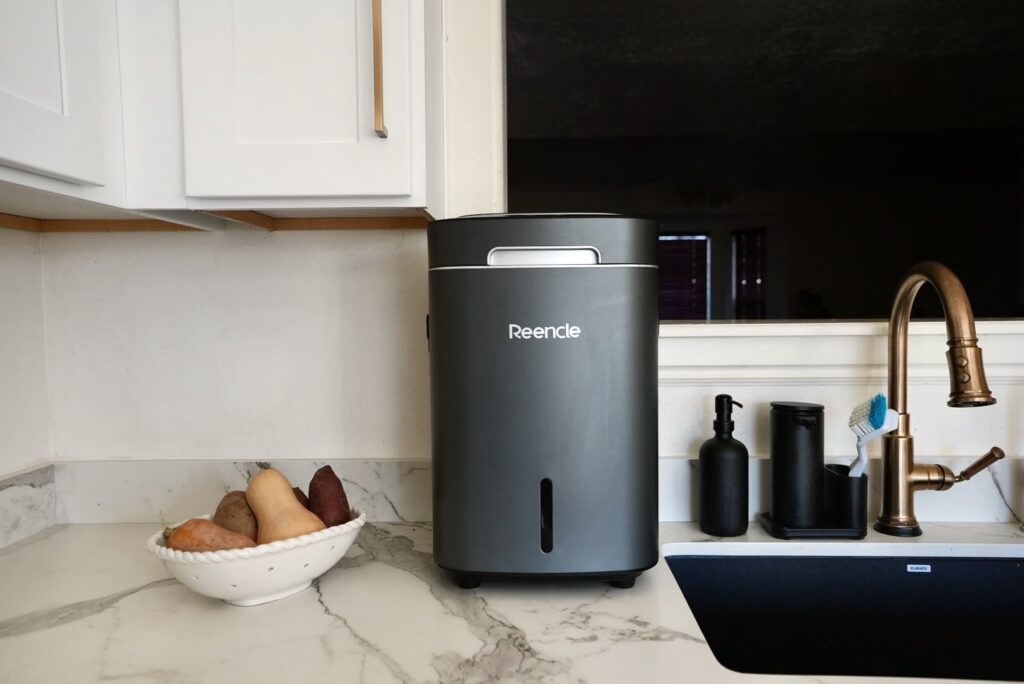
4. Wood Chips / Bark Mulch (Aged):
Chipped or shredded wood and bark from tree trimmings or sawmill by-products. Aged to reduce nitrogen draw. Best for perennial beds and pathways around raised beds.
| Pros | Cons |
|---|---|
| Long-lasting | Not ideal for direct contact with vegetables—can tie up nitrogen in the topsoil |
| Excellent weed control | Can be slow to break down |
| Visually tidy and attractive | Fresh chips may rob nitrogen from plants if mixed into soil |
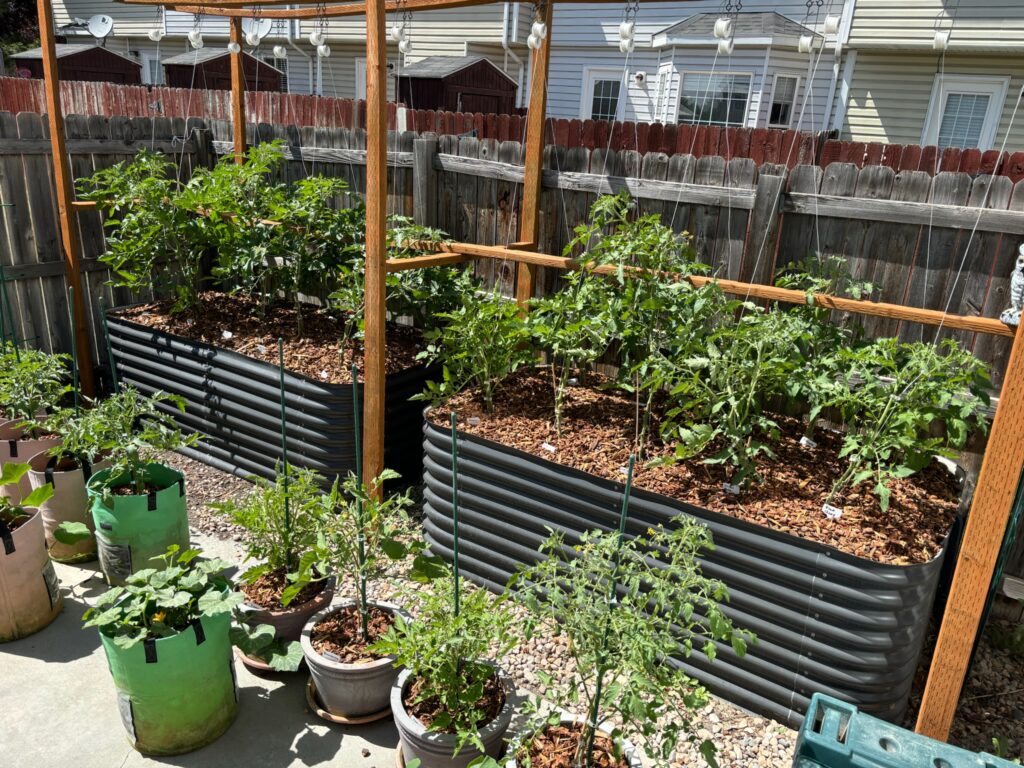
5. Grass Clippings:
Fresh or dried cuttings from lawn mowing. Should be free of herbicides or pesticides. Best for vegetable beds (use sparingly and only untreated clippings).
| Pros | Cons |
|---|---|
| Readily available and rich in nitrogen | Can mat and become slimy if applied too thickly |
| Usually FREE if you have a lawn! | Must be pesticide/herbicide free |
| Breaks down quickly | May encourage weed seeds if collected from a weedy lawn |
| Adds fertility to soil |
6. Pine Needles (Pine Straw):
Fallen needles from pine trees. Light and airy in texture. Best for acid-loving plants like blueberries; pathways.
| Pros | Cons |
|---|---|
| Light and easy to apply | Slightly acidifying (though minimal effect in most soils) |
| Doesn’t compact easily | Not nutrient-rich |
| Slow to break down; long-lasting | May not suppress weeds as effectively on its own |
7. Newspaper or Cardboard (Sheet Mulching):
Layers of plain black-and-white newspaper or corrugated cardboard used as a biodegradable weed barrier. Best for under other mulch layers to block weeds.
Ink Safety Note: Modern newspapers generally use soy-based or vegetable inks, which are garden-safe. However, avoid:
- Glossy pages, magazines, or color inserts
- Older publications (may contain petroleum-based or heavy metal inks). These may introduce toxins into the soil or harm microbes.
| Pros | Cons |
|---|---|
| Excellent weed barrier | Needs to be weighted down or covered to prevent blowing away |
| Recyclable and biodegradable | Not visually appealing on its own |
8. Living Mulch (Cover Crops / Ground Covers):
Low-growing plants (like clover, vetch, or creeping thyme) that act as a living protective layer. Best for long-term soil health and erosion prevention.
| Pros | Cons |
|---|---|
| Feeds the soil when turned in or cut back | Requires maintenance and planning |
| Protects soil from erosion and temperature extremes | May compete with crops if not well-managed |
| Can attract beneficial insects | Not suitable for every crop type or growing stage |
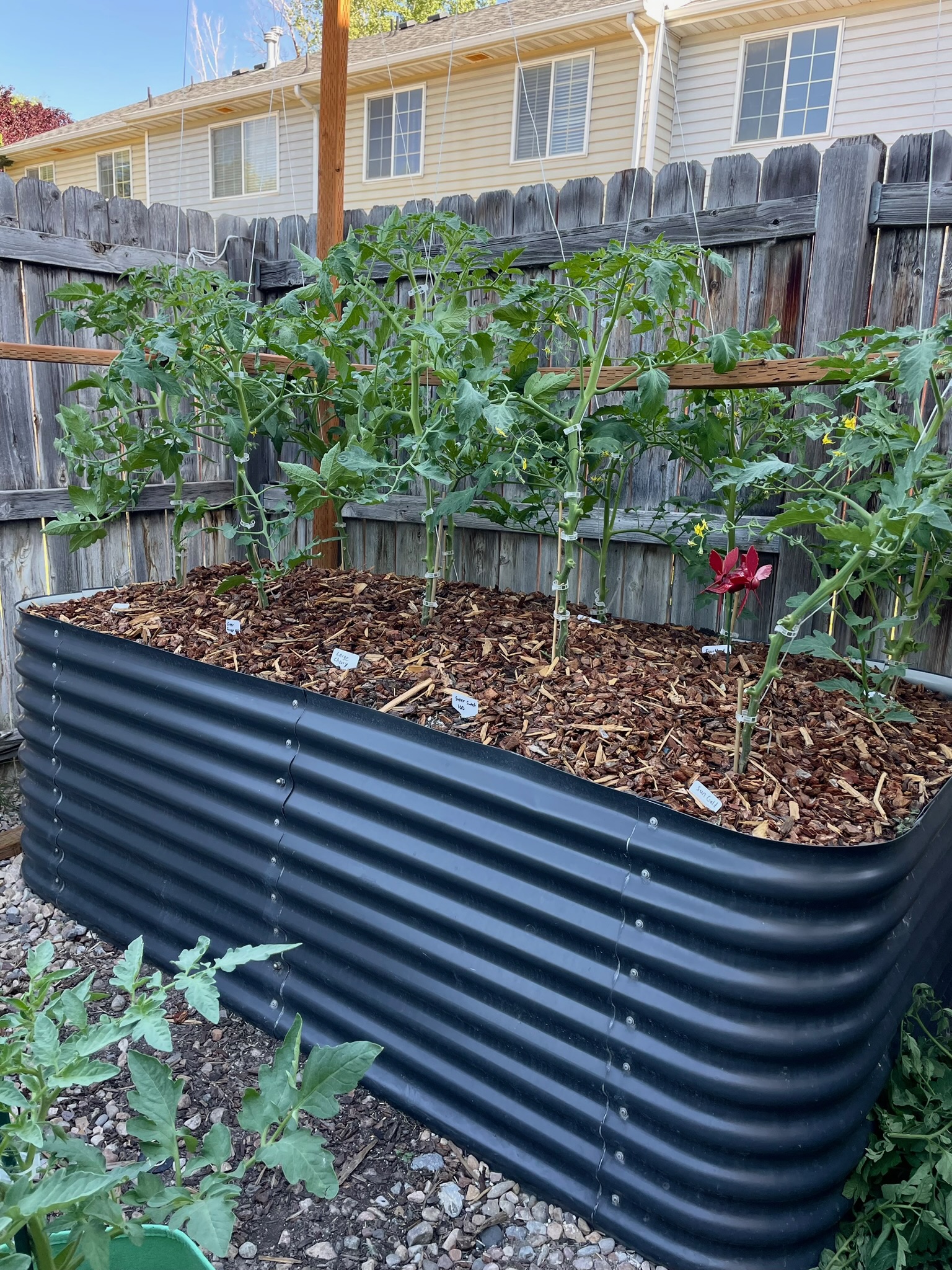
Tips for Effective Mulching
- Depth Matters: Apply 2 – 3 inches of organic mulch for best results.
- Keep Off Stems: Avoid piling mulch directly against plant stems to prevent rot.
- Refresh Annually: Reapply or top up mulch each season as needed.
- Layering Helps: Consider using cardboard/newspaper beneath mulch for extra weed suppression.
Thanks for reading along, guys!
If you enjoyed this blog post, be sure to check out my other gardening blog posts:
- How to Start a Garden on a Budget for Under $100
- Essential and Nice-to-Have Garden Products for Your Perfect Setup
- My Garden Setup: 3 Best Garden Containers for Every Gardener
- Understanding Garden Light and Shade: A Simple Guide
- How to Build a Homemade Trellis Using Cattle Panel
Be sure to follow me on social media for daily content and instructional videos about gardening!

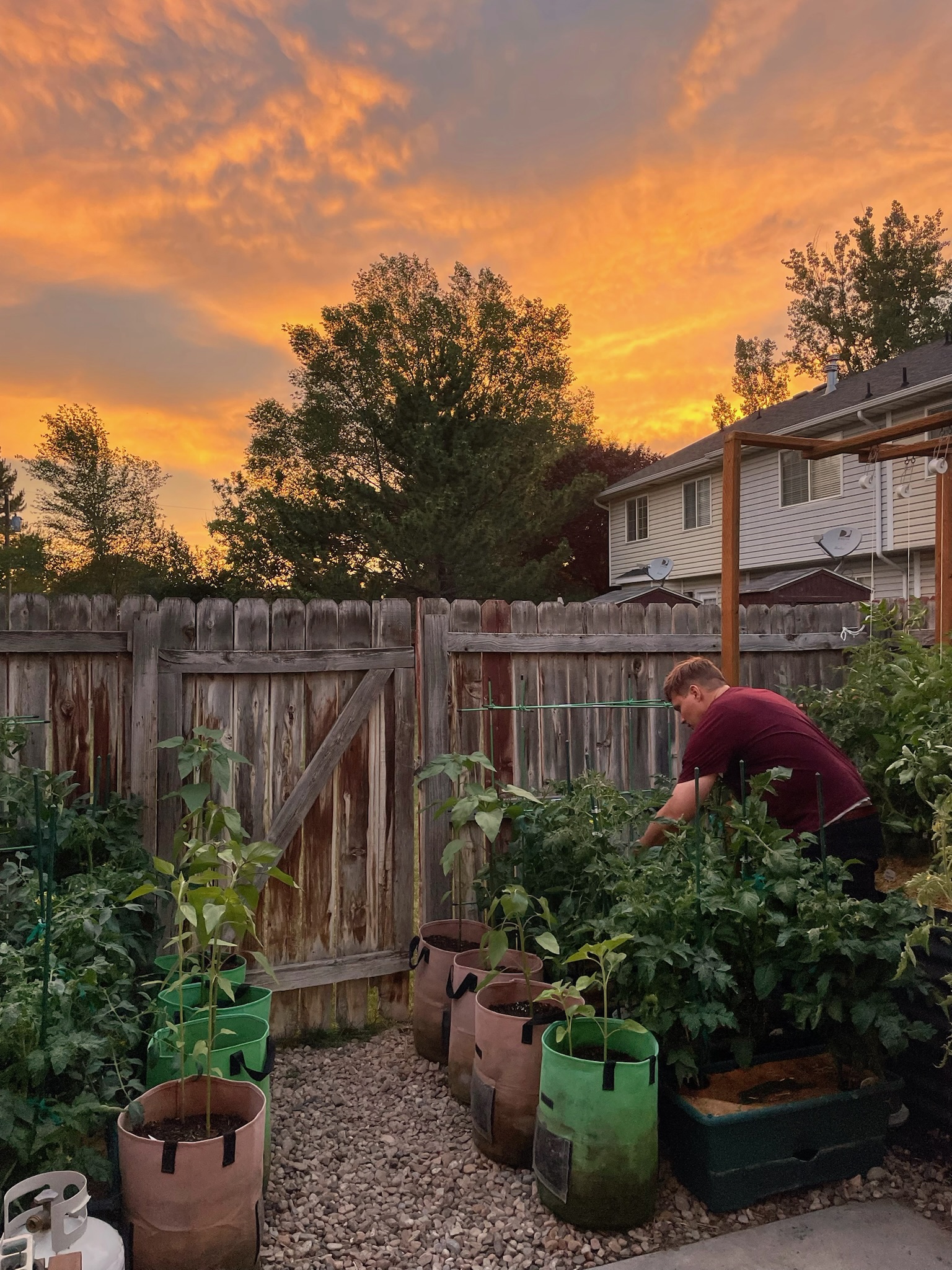





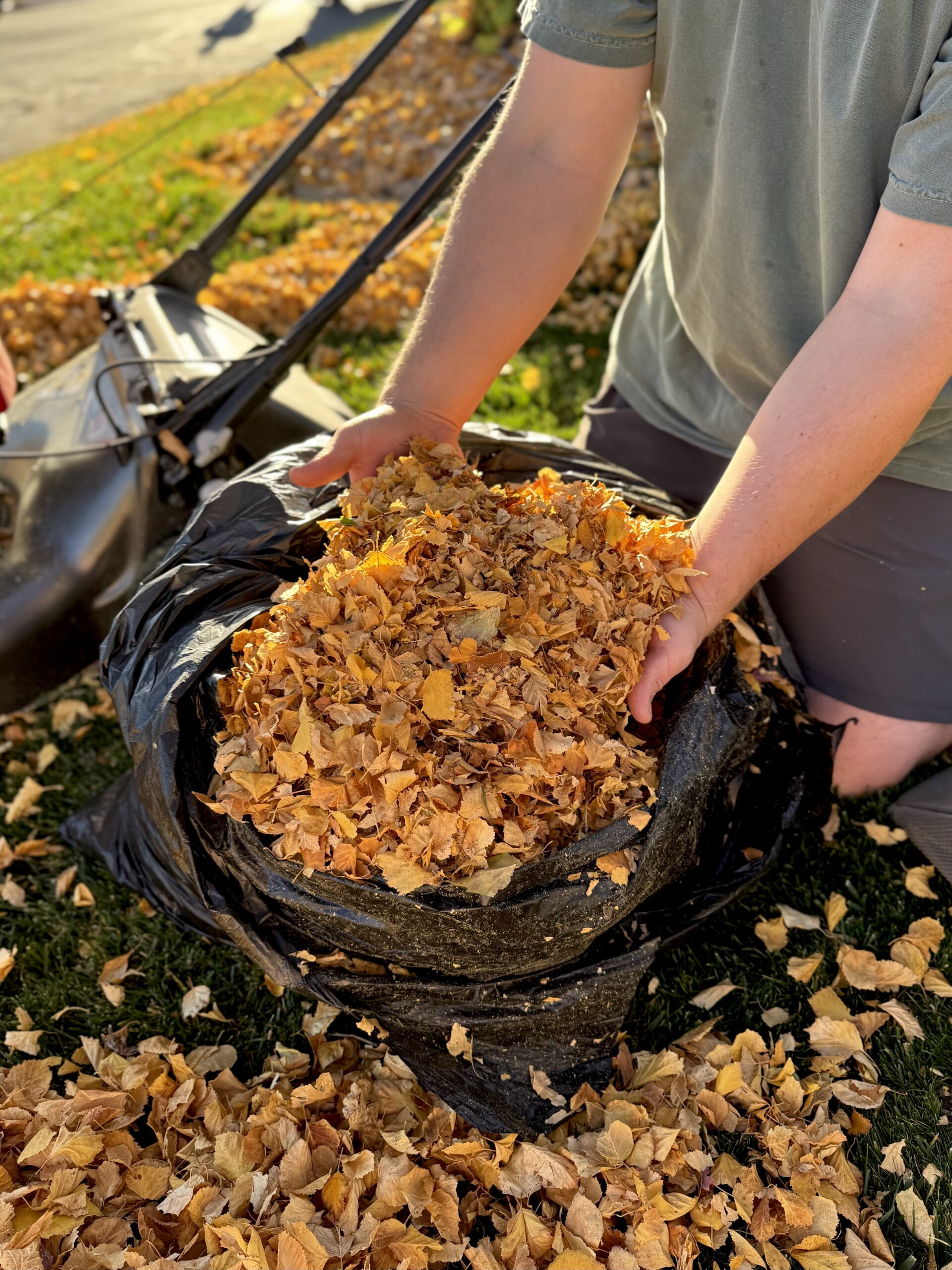
I love straw but it is so hard to find it without seeds! There needs to be more garden grade straw out there.
I love straw but it is so hard to find it without seeds! There needs to be more garden grade straw out there.
I’ve always skipped mulch, but now I get why it matters, especially for water retention.